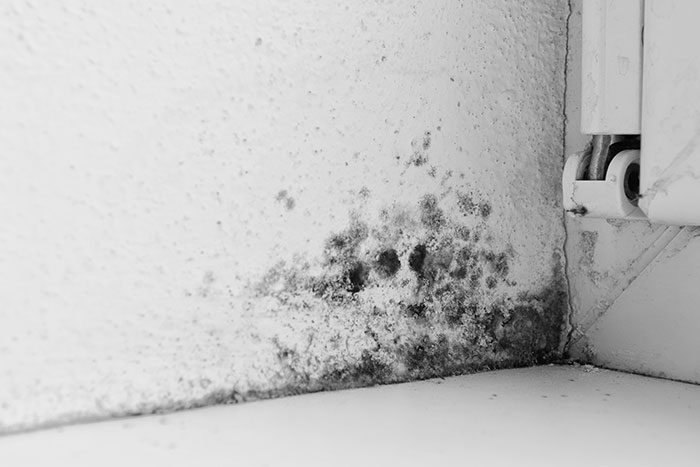Mold 101 by Indoor Green Solutions
Mold Prevention in Washington, D.C.
Understanding mold and how it develops is the first step to mold prevention within the home. To start, molds are microscopic organisms that can be found year-round, both indoors and outdoors. All molds require moisture for growth and reproduce via spores. Once a spore is produced, it will disperse itself into the world to find a proper place to grow and thrive. This is where many of our problems with mold arise. Since spores are so light, they can be picked up by various forces of nature and transported far from their birthplace. The spores in the air outside can then attach themselves to our shoes, clothing, bags, or pets and be carried directly into our homes. Additionally, molds can find their way indoors through open windows, vents, or HVAC systems.
Don’t panic…yet! Every home has some mold. The problem arises when your home presents conditions in which these mold spores can thrive and reproduce, resulting in significant mold growth. With Indoor Green Solutions, you will learn the areas within your home where mold can become an issue and how to prevent mold growth in the future.

Places Where Mold Can Grow
Mold thrives in damp places, which is why moisture infiltration is the leading cause of mold growth in homes. Mold is likely to present itself anywhere within the home where water has been sitting for 24 hours or more, or where it is consistently damp from leaks or condensation. Places in the home that are particularly susceptible to mold are:
- Basements, attics, garages, and crawlspaces
- Shower curtains
- Windows and window sills
- Air conditioning and heating vents
- Underneath kitchen and bathroom sinks
- Around drywall and insulation
- Underneath carpets or upholstery
- Behind wall and ceiling tiles
- Washing machines and dryers
While it’s helpful to know where mold grows, you still won’t be able to “mold-proof” your home. That’s why it’s better to understand the reasons why mold grows in these places, so you can begin implementing mold prevention habits.
How You Can Practice Mold Prevention
First things first: without moisture control, there will be no mold control. If you find mold in your home, you must take measures to clean the scene as much as possible and fix the water problem. Think back to why these areas may have developed a mold issue. Does the basement always flood? Do the pipes under your kitchen sink constantly leak? What about the condensation that frequently builds up on your bedroom window? All these examples of moisture within the home should be considered big warning signs as far as mold is concerned. Some ways to stop mold growth in its tracks are:
- Dry wet areas immediately: As we know now, mold can’t grow without moisture. That’s why it’s crucial to tackle these problem areas, as well as everyday occurrences like wet hand towels or bath mats, within 24-48 hours to ensure mold does not have a chance to grow or spread.
- Mold prevention through proper ventilation: Properly ventilating high-moisture areas in the home such as the kitchen, laundry room, and bathroom is critical. With that being said, make sure your venting options, like AC units and dehumidifiers, are not contributing to the moisture problem themselves.
- Implement mold-resistant products: For example, install moisture resistant drywall. Traditional drywall is composed of plaster core pressed between plies of paper. Since mold grows well on paper products, most drywall is susceptible to mold growth.
- Monitor indoor humidity: Mold thrives in warm temperatures, so it is best to keep indoor humidity below 60%. To many humans, comfortable indoor temperatures range from 67˚ F to 72˚ F, which becomes an issue because mold can actively grow in temperatures spanning from 40˚ F to 100˚ F.
- Make simple repairs outside the home: If the ground around your home does not correctly slope, it is probable that water could collect and begin seeping into your basement or crawlspace. Additionally, clogged or damaged roof gutters can contribute to a leaky roof that can promote mold growth in your ceilings.
- Watch out for your house plants: This one is something many homeowners tend to overlook. The fact is, the moist soil that keeps your plants alive is also the perfect breeding ground for mold. Make sure your plants are kept in pots with proper drainage holes and don’t forget to empty the drainage plates as well!
- Invest in a reliable HVAC system: The best way to ensure your house stays free of excess moisture is to have an efficiently-working HVAC system. Faulty HVAC systems play a significant role in your house’s mold threat since they can provide the right temperature for mold to grow and spread contaminated air. Top-notch ventilation and airflow systems are excellent at stopping mold growth since mold requires lingering moisture to thrive.
Call the Mold Specialist at Indoor Green Solutions
If your house is damaged or has been previously damaged by water, we encourage you to have one of our technicians come inspect your living space for hidden or unseen molds. Water restoration services done through Indoor Green Solutions are quick and efficient at reducing moisture within your home, which will decrease the likelihood of mold growth. In addition, we inspect your house for the source of the problem, so we can prevent any future leaks and damages.
Do you live in Gaithersburg, MD, and require mold experts or water damage restoration services? Call today for a free estimate!
